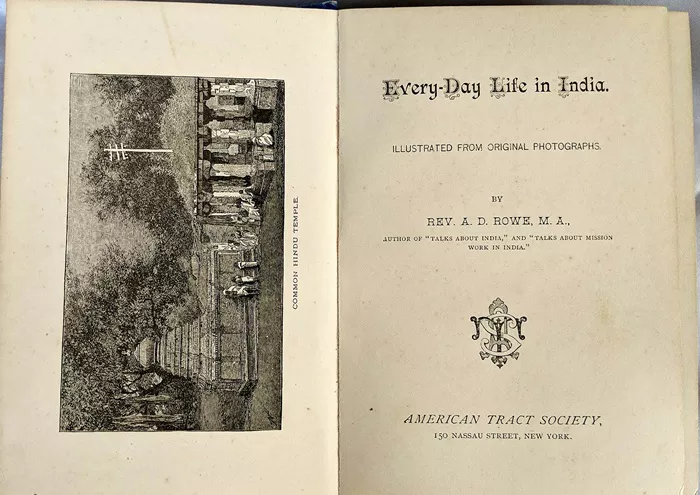A recently published book sheds light on the lives and journeys of early Americans who lived in India before independence, revealing a unique perspective on the subcontinent during this transformative period.
Anuradha Kumar’s Wanderers, Adventurers, Missionaries: Early Americans in India (Speaking Tiger) is a meticulously researched work tracing the experiences of Americans who arrived in India between 1700 and 1950. Unlike their British counterparts, who came under royal charters primarily for East India Company trade, these Americans were driven largely by personal quests and curiosity.
“I have lived in the US for several years and had been exploring the relatively new field of South Asian-American historical interactions,” Kumar explains. “That research inspired me to look at the reverse journey — early Americans who traveled to India, even before the United States was officially established.”
The book profiles a diverse group including medical missionaries, artists, educators, mystics, and fortune seekers. These adventurers often traveled under challenging conditions, from crossing treacherous wooden bridges in Kashmir to navigating rivers on camelback. One striking anecdote recounts painter Lockwood de Forest’s fearful crossing of a rickety drawbridge in Kashmir.
Kumar highlights notable figures such as Ida Scudder, founder of the Vellore Christian Medical College, and Satyanand Stokes, a close associate of Gandhi who introduced apple cultivation to Himachal Pradesh. Other lesser-known Americans, like Bartholomew Burges, who documented his travels but famously mispredicted a comet’s appearance in the 1780s, were uncovered through painstaking research in historical newspapers and archives.
Cities such as Bombay (now Mumbai) played a key role as hubs for these American visitors. They contributed significantly to local society, with Emma Brainerd-Ryder, a doctor and reformer, founding the Bombay Sorosis — an organization advocating women’s education, dress reform, and voting rights. The cultural scene flourished as well, exemplified by Shakespearean actor Daniel Bandmann staging Hamlet at the old Gaiety Theatre (today’s Capitol Cinema), with local Parsi gentlemen participating in auditions.
“Bombay in the 19th and early 20th centuries was a vibrant, cosmopolitan city, alive with diverse ideas and communities,” Kumar notes. She describes various societies active at the time, including the Bombay Geographical Society and the Natural History Society, reflecting the city’s role as a haven for seekers of knowledge and fortune alike.
A significant portion of the book focuses on medical missionaries, especially women, who navigated complex social and cultural landscapes. Kumar points out how mid-19th-century reform movements intersected with feminist ideas, suffrage campaigns, and education efforts. Despite the overarching Western “civilizing mission,” many women developed empathetic relationships with their Indian counterparts, fostering mutual support and understanding.
For Kumar, writing this book was a way to resurrect “lost and forgotten voices,” ensuring that these early Americans’ lives and adventures are not consigned to oblivion. “I felt it was important to show that their journeys were meaningful and deserving of remembrance,” she concludes.
Wanderers, Adventurers, Missionaries: Early Americans in India is available at leading bookstores and online retailers.

